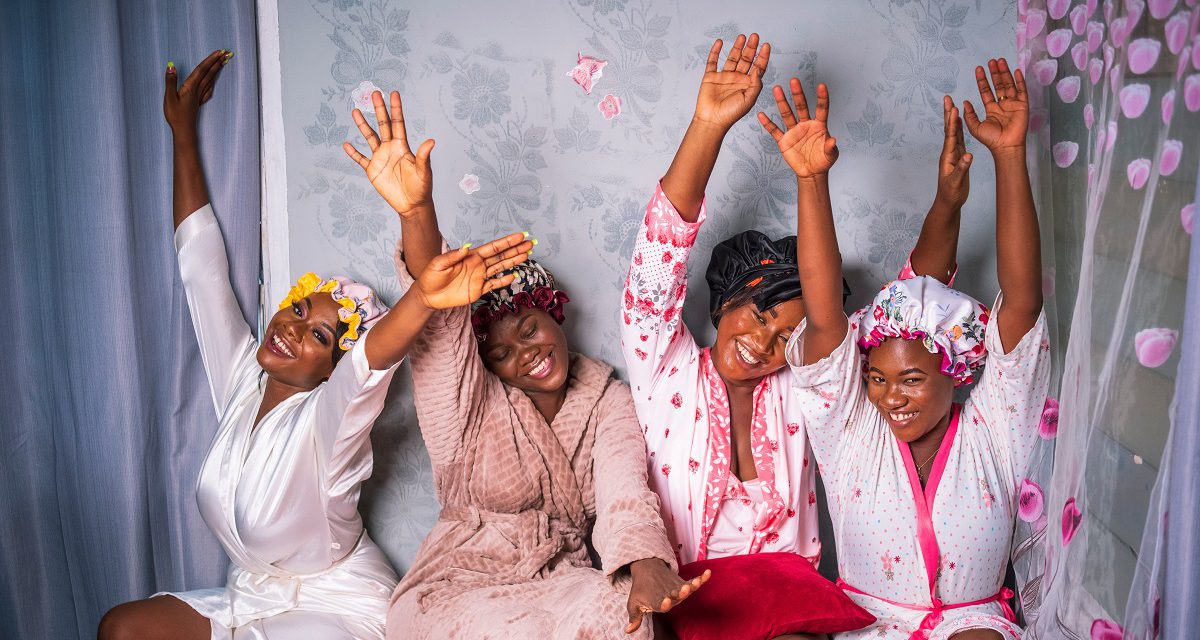AUTHOR’S NOTE: Four years ago, a routine 3D mammogram revealed a baby cobra curled up on my chest. Tiny but lethal, my personalized version of breast cancer was particularly aggressive and challenging to eradicate once it spreads.
This cancer, however, spotlighted at an extremely early stage, never got the opportunity to slither into my lymph nodes. I will be forever grateful to 3D mammography for sounding the alarm. Since I had dense breasts, I paid extra to spring for a 3D mammogram instead of less precise 2D imaging. It’s a good thing, because 2D would not have picked up the early lesion and my next scan results, a year later, would have been sobering indeed.
While 2D mammograms take only one static image of the breast, 3D mammograms record 60 images at 15-degree angles, providing a multilayered view. “As a radiologist, I can scroll through the images at my work station, looking at the breast tissue in 1 mm slices, very similar to a CAT scan,” said Dr. Amy Patel, medical director for women’s imaging at Liberty Hospital and lead interpreting physician for breast imaging at Ray County Memorial Hospital. “If there is a cancer hiding, particularly in a breast with dense tissue, I’m more likely to see it.”
3D mammograms are also less painful than 2D scans. “There is less compression involved, yet we can see things better,” Patel said. “Smart curve” 3D compression paddles reduce discomfort because they conform to the shape of the woman’s breast. “We get feedback from patients like, ‘Wow! This mammogram didn’t even hurt!’”
What about those who fear overexposure to radiation? “Radiation exposure from a mammogram is pretty negligible,” she said. “You get more radiation exposure flying from New York to LA.”
3D Mammograms Covered in Missouri
According to the American Cancer Society (cancer.org), since the advent of widespread mammography imaging in the U.S. in the 1980s, breast cancer deaths have declined by 40 percent.
However, although overall cancer health has improved, stark demographic divides remain — especially for Black patients. According to the Breast Cancer Research Foundation, although incidences of breast cancer have similar rates across most racial groups, Black patients face a death rate 41% higher than white patients. This enormous gap in death rates grows even larger in women under 50, with Black patients experiencing a mortality rate twice as high as their white counterparts.
Black patients are more likely to have aggressive cancers, but this difference in mortality rate is also the result of imbalances in quality of care. Social determinants of health play a large part in preventing Black patients from receiving the care they need to close the mortality gap. Inability to take time off of work to travel to appointments, lack of transportation or nearby care facilities, insufficient health insurance to cover preventative care, racial bias, and other factors can impede not only the detection of breast cancers but also the patient’s ability to follow through with treatment plans. Until more measures are taken to ensure that Black patients can easily access the same quality of care as white patients, the death rate gap will not close.
At one time, insurance companies in Missouri could reject claims for 3D mammograms, citing circa 1992 state requirements that only mandated coverage of 2D mammograms every other year, starting at age 50. But on January 1, 2019, Missouri House Bill 1252 went into effect, requiring private insurers to cover both 2D and 3D annual mammograms, beginning at age 40.
Patel, who earned her medical degree from the UMKC School of Medicine and served as a radiology instructor at Harvard Medical School, was involved with editing legislation of the entire bill, working in concert with Missouri Radiological Society and Missouri State Medical Association. She worked on similar legislation in Massachusetts while on staff with Beth Israel Deaconess Medical Center in Boston and wanted to do the same for her home state.
Bringing Imaging Skills Back Home
A native of Chillicothe, Mo., Patel was well-acquainted with health care access issues plaguing rural Missouri, and it bothered her. The area needed an educational boost, more expertise when it came to breast imaging. “I was in Boston, where there were tons of specialists,” she said. At her hospital alone, she was one of 10 breast imaging specialists. Northwest Missouri – an area of about 350,000 people – had three. “Women in Boston were receiving great care while at home, people were dying.”
In the summer of 2018, Patel moved back to Missouri, accepting positions at both Liberty Hospital and Ray County Memorial Hospital (RCMH). “I believe we are providing improved care to a quarter of the state, and I’m very proud of that,” she said.
In December 2018, RCMH spent nearly $400,000 on a state-of-the-art 3D mammography machine, the Hologic Selenia Dimensions 6000. “Most rural areas don’t get access to this cutting-edge technology,” Patel said. “The fact that Ray County had the foresight to budget for such an expensive piece of equipment and have 3D available for the women in this area, it’s just unheard of. It’s such a rare, special thing we’re doing in this part of the country to provide breast care for women.”
“We do have clients from Ray County who can’t afford imaging. We were just awarded a large grant from Susan G. Komen of Greater Kansas City, so if a woman can’t afford a mammogram, we can use those funds.” Funding also comes from organizations including Liberty Hospital Foundation, American Cancer Society, and ShowMe Healthy Women. “You call us, and we will definitely take care of you.”
Risk Assessment
When should you get your first mammogram?
In April 2018, the American College of Radiology and the Society of Breast Imaging released new recommendations that every woman, regardless of color, by age 30 needs to be risk-assessed for breast cancer. “The most accurate risk assessment tool is called the Tyrer-Cuzick model,” Patel said. Tyrer-Cuzick measures a long list of risk factors, including smoking, alcohol use, body mass index, breast density, hormone use, BRCA 1 and 2 genetic testing results, family history, previous cancers, and more.
“If they are deemed to be high risk – which is 20 percent or greater lifetime risk after calculating all these factors – they need to start annual screening mammograms at age 30, with supplemental screening in the form of breast MRI or ultrasound, alternating every six months with mammography,” she said. “We’re coming down very hard on surveillance recommendations for young women because we feel we’re underestimating breast cancer risk in this country. Also, young women tend to have more biologically aggressive cancers.”
Women who are not high risk should start annual mammograms at age 40.
Future of Breast Imaging
“Breast imaging is rapidly evolving, and it’s exciting to see,” Patel said. “It seems like every year, something new is coming down the pipeline.” One example is abbreviated breast MRIs, which can do a scan in less than 10 minutes.
“But really, I think the future of breast imaging is going to be in the hands of artificial intelligence (AI) and machine learning,” she said. The radiologist will flag an area of interest. Then, based on an algorithm of hundreds of thousands of case studies integrated into the computer, and based on characteristics of the lesion (margins, shape, vascularity, etc.), AI will decide if it’s suspicious or cancer, or if it’s benign or probably benign.
“Studies are showing that AI capabilities are just as accurate as a radiologist,” Patel said. “That is amazing.” But AI can’t talk with or comfort patients, addressing the very human side of medicine. “AI is never going to replace us, but it will make us better at what we do, helping us with our diagnostic certainty.”
HOW TO PERFORM A BREAST SELF-EXAM
All women, including those who are postmenopausal, should perform monthly self-exams as indicated by the National Breast Cancer Foundation (nationalbreastcancer.org/breast-self-exam):
In the shower: Using the pads of your fingers, move around your entire breast in a circular pattern moving from the outside to the center, checking the entire breast and armpit area. Check both breasts each month feeling for any lump, thickening, or hardened knot. Notice any changes and get lumps evaluated by your health care provider.
In front of a mirror: Visually inspect your breasts with your arms at your sides. Next, raise your arms high overhead. Look for any changes in the contour, any swelling, dimpling of the skin or changes in the nipples. Next, rest your palms on your hips and press firmly to flex your chest muscles. Left and right breasts will not exactly match—few women’s breasts do, so look for any dimpling, puckering, or changes, particularly on one side.
Lying down: When lying down, the breast tissue spreads out evenly along the chest wall. Place a pillow under your right shoulder and your right arm behind your head. Using your left hand, move the pads of your fingers around your right breast gently in small circular motions covering the entire breast area and armpit. Use light, medium and firm pressure. Squeeze the nipple; check for discharge and lumps. Repeat these steps for your left breast.
Source: National Breast Cancer Foundation (nationalbreastcancer.org/breast-self-exam)








